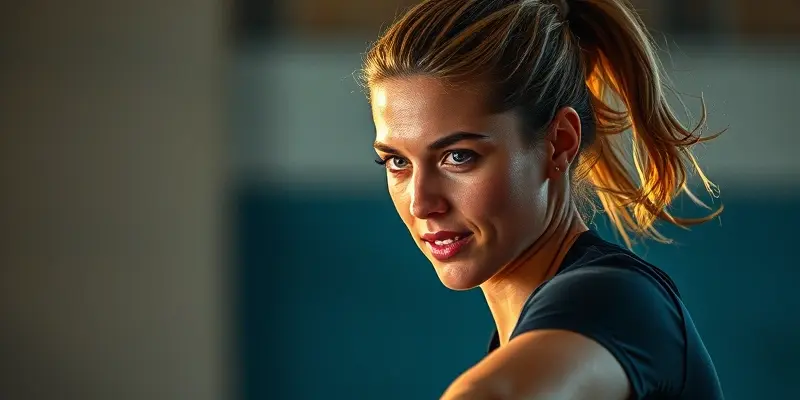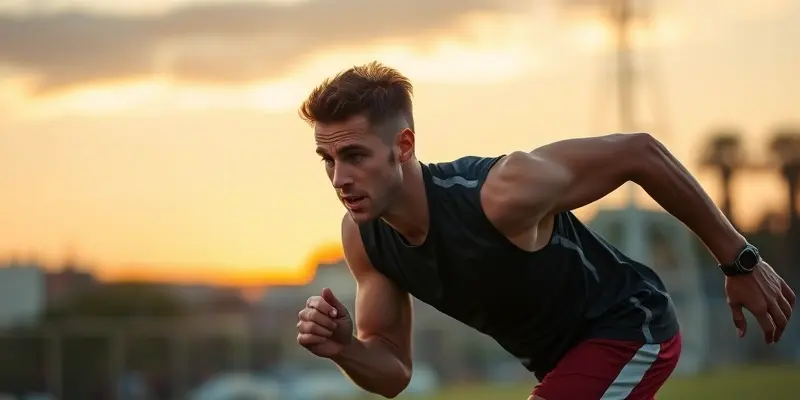Recovery, Injury, and the Nadia Comăneci Lesson: How to Train Smarter, Not Harder
When you think of Olympic icons, Nadia Comăneci probably comes to mind—a symbol of perfection, determination, and victory. But what if we told you her path was marked by extreme pressure, burnout, and injury risks? Whether you’re just starting at the gym, training for your first 10K, or going for gold, there are real lessons here for all of us.
Let’s dive into why smart recovery is as important as hard training, and what we can all learn from Nadia’s story.
Nadia Comăneci: Perfection Under Pressure
Nadia Comăneci dazzled the world with her perfect 10 at the 1976 Montreal Olympics—at just 14 years old. But behind the medals was a harsh reality. Under Romania’s communist regime, Nadia was pushed relentlessly, her training deeply controlled for propaganda. Coaches monitored everything—from diet to her very movements—using discipline methods that would shock modern athletes.
Mistakes were punished with extra drills, beatings, and humiliation. State officials even used the secret police to ensure she didn’t defect, treating her like a national asset rather than a teenager with dreams and limits.
Perhaps most alarming was the expectation that athletes—no matter their pain or injuries—should keep pushing. “Train through it” wasn’t just advice, it was an order. As a result, long-term health was sacrificed for short-term glory.
From Nadia’s Era to Now: Key Lessons in Injury and Recovery
Past Mistakes: Ignoring Pain, Chasing Perfection
Does this sound familiar? You tweak your knee but keep pushing to hit a milestone—or skip rest days because you’re worried about losing progress. Nadia’s story reveals how damaging this mindset can be. In her era:
- Injuries were hidden or dismissed.
- Nutrition was calorie-restricted to dangerous levels.
- Psychological stress was ignored, with support nearly nonexistent.
These habits led to broken bodies and minds—not just in elite sports, but among everyday athletes too.
The Modern Playbook: Science-Based Recovery
Today’s experts (myself included, with a decade in fitness coaching) shout a different message: Listen to your body. Here’s what we know works:
- Rest and Rehabilitation: Allow injured tissues to heal. This isn’t weakness—it’s smart training. For a detailed guide, check out our injury recovery checklist.
- Strength and Mobility Work: Focus on supporting muscles, with proper form and technique. This is injury prevention 101.
- Precise Progression: Ramp up intensity gradually. Instead of chasing PBs every session, aim for sustainable gains.
- Balanced Nutrition, Not Starvation: Protein, healthy fats, and micronutrients support both performance and healing. Depriving your body delays recovery and increases injury risk.
- Modern Recovery Tools: Foam rollers, massage guns, compression gear—used correctly, these can improve muscle repair.
Practical Strategies for Every Athlete
No matter your level, prevention and recovery belong in your toolkit. Here are science-backed steps you can add to your training:
1. Respect Pain—Don’t Power Through
Stop and assess rather than pushing through sharp or persistent pain. Seek professional guidance early.
2. Warm Up, Cool Down, Mobility
Five extra minutes can save you weeks of recovery. Dynamic warmups and gentle cooldowns prep muscles to perform and repair.
3. Nutrition to Heal
Think of food as your construction crew—protein builds, antioxidants protect, and healthy carbs fuel energy and repair. Learn more about the role of antioxidants in sports nutrition.
4. Use Recovery Gadgets Wisely
Foam rollers or massage guns can ease soreness, but they aren’t magic. Pair them with sleep and hydration for best results.
5. Mental Resilience—Not Just a Physical Game
Setbacks are normal. Use visualization, goal setting, and connect with supportive teammates. Recovery can be lonely, so stay plugged in to your community.
Conclusion: Focus on Longevity, Not Just the Podium
Nadia Comăneci’s journey is a dramatic reminder of what happens when we ignore the body’s signals and chase short-term success. But you don’t need to be an Olympian to learn this lesson! As fitness enthusiasts, our goal is lifelong health—not just a fleeting win or PR.
Train smart, recover fully, and remember: Your biggest victory is staying strong, healthy, and motivated for the long run. Give your body and mind permission to rest—then, like Nadia, you can achieve amazing things, on your own terms.
Stay proactive, stay safe—and keep the GymPulse Club spirit strong! What recovery tip has made the biggest difference in your own journey? Share with us in the comments below!

